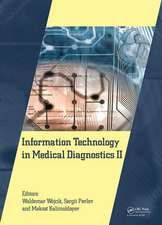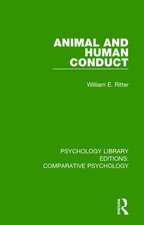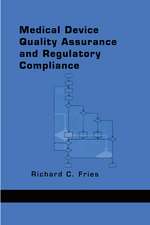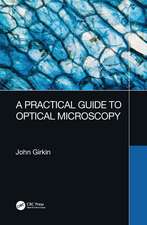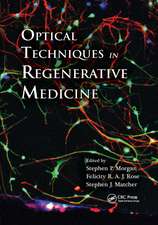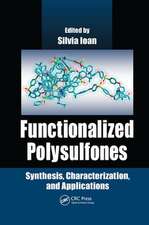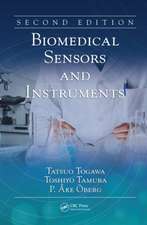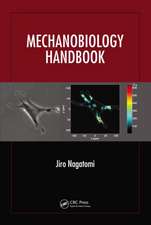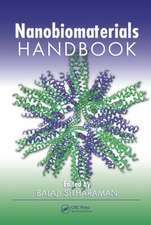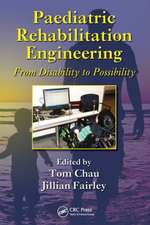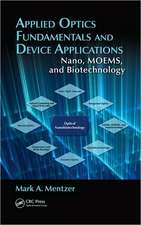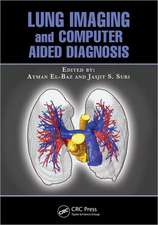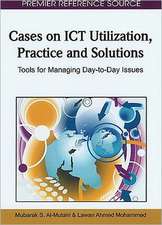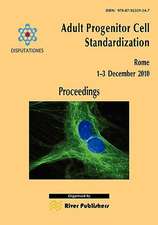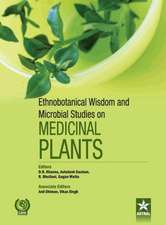Biomedical Engineering Principles
Autor Arthur B. Ritter, Vikki Hazelwood, Antonio Valdevit, Alfred N. Ascioneen Limba Engleză Paperback – 28 iun 2018
Assuming no more than a passing acquaintance with molecular biology, physiology, biochemistry, and signal processing, Biomedical Engineering Principles, Second Edition provides just such a solid, accessible grounding to this rapidly advancing field. Acknowledging the vast range of backgrounds and prior education from which the biomedical field draws, the organization of this book lends itself to a tailored course specific to the experience and interests of the student.
Divided into four sections, the book begins with systems physiology, transport processes, cell physiology, and the cardiovascular system. Part I covers systems analysis, biological data, and modeling and simulation in experimental design, applying concepts of diffusion, and facilitated and active transport. Part II presents biomedical signal processing, reviewing frequency, periodic functions, and Fourier series as well as signal acquisition and processing techniques.
Part III presents the practical applications of biomechanics, focusing on the mechanical and structural properties of bone, musculoskeletal, and connective tissue with respect to joint range, load bearing capacity, and electrical stimulation. The final part highlights capstone design, discussing design perspectives for living and nonliving systems, the role of the FDA, and the project timeline from inception to proof of concept.
Cutting across many disciplines, Biomedical Engineering Principles, Second Edition offers illustrative examples as well as problems and discussion questions designed specifically for this book to provide a readily accessible, widely applicable introductory text.
| Toate formatele și edițiile | Preț | Express |
|---|---|---|
| Paperback (1) | 427.16 lei 6-8 săpt. | |
| CRC Press – 28 iun 2018 | 427.16 lei 6-8 săpt. | |
| Hardback (1) | 1124.20 lei 6-8 săpt. | |
| CRC Press – 24 mai 2011 | 1124.20 lei 6-8 săpt. |
Preț: 427.16 lei
Preț vechi: 502.54 lei
-15% Nou
Puncte Express: 641
Preț estimativ în valută:
81.75€ • 85.03$ • 67.49£
81.75€ • 85.03$ • 67.49£
Carte tipărită la comandă
Livrare economică 14-28 aprilie
Preluare comenzi: 021 569.72.76
Specificații
ISBN-13: 9781138073241
ISBN-10: 1138073245
Pagini: 544
Ilustrații: 256
Dimensiuni: 156 x 234 x 28 mm
Greutate: 0.45 kg
Ediția:Nouă
Editura: CRC Press
Colecția CRC Press
ISBN-10: 1138073245
Pagini: 544
Ilustrații: 256
Dimensiuni: 156 x 234 x 28 mm
Greutate: 0.45 kg
Ediția:Nouă
Editura: CRC Press
Colecția CRC Press
Public țintă
UndergraduateCuprins
Introduction: Modeling of Physiological Processes. Cell Physiology and Transport. Principles and Biomedical Applications of Hemodynamics. A Systems Approach to Physiology. The Cardiovascular System. Biomedical Signal Processing. Signal Acquisition and Processing. Techniques for Physiological Signal Processing. Examples of Physiological Signal Processing. Principles of Biomechanics. Practical Applications of Biomechanics. Biomaterials. Principles of Biomedical Capstone Design. Unmet Clinical Needs. Entrepreneurship: Reasons why Most Good Designs Never Get to Market. An Engineering Solution in Search of a Biomedical Problem to Solve. Tissue Engineering. Future Trends in BME.
Notă biografică
About the Editors:
ARTHUR B. RITTER is Distinguished Service Professor and Director of Biomedical Engineering, Stevens Institute of Technology, Hoboken, New Jersey. Dr. Ritter received the B.C.H.E. degree at the City University of New York, New York, and the M.S. and Ph.D. degrees at the University of Rochester, New York.
STANLEY REISMAN is Professor of Biomedical Engineering, New Jersey Institute of Technology, Newark. He received the B.S. degree in electrical engineering from the Polytechnic Institute of Brooklyn, New York, the M.S. degree in electrical engineering from the Massachusetts Institute of Technology, Cambridge, and the Ph.D. degree in bioengineering from the Polytechnic Institute of New York, Brooklyn.
BOZENA B. MICHNIAK is Professor, Department of Pharmacology and Physiology, Rutgers University, Newark, New Jersey, and Director of the Drug Delivery Laboratory and the Industrial Membership Program, New Jersey Center for Biomaterials, Piscataway. Dr. Michniak received the Ph.D. degree (1980) in pharmacology from Leicester Polytechnic, England.
ARTHUR B. RITTER is Distinguished Service Professor and Director of Biomedical Engineering, Stevens Institute of Technology, Hoboken, New Jersey. Dr. Ritter received the B.C.H.E. degree at the City University of New York, New York, and the M.S. and Ph.D. degrees at the University of Rochester, New York.
STANLEY REISMAN is Professor of Biomedical Engineering, New Jersey Institute of Technology, Newark. He received the B.S. degree in electrical engineering from the Polytechnic Institute of Brooklyn, New York, the M.S. degree in electrical engineering from the Massachusetts Institute of Technology, Cambridge, and the Ph.D. degree in bioengineering from the Polytechnic Institute of New York, Brooklyn.
BOZENA B. MICHNIAK is Professor, Department of Pharmacology and Physiology, Rutgers University, Newark, New Jersey, and Director of the Drug Delivery Laboratory and the Industrial Membership Program, New Jersey Center for Biomaterials, Piscataway. Dr. Michniak received the Ph.D. degree (1980) in pharmacology from Leicester Polytechnic, England.
Recenzii
Praise for the Previous Edition
"[Provides] not only an in-breadth overview on current BME fields, but also an in-depth analysis of specific selected topics that are supported by appropriate mathematical models, equations, quantitative data charts and tables."
—Biomedical Engineering Online, 2005
"For university faculty, [this] book is an excellent textbook for a class. Each chapter contains numerous examples and contains many figures to enhance learning. References and suggestions for further reading are included at the end of each chapter. Problems are included at the end of chapters, where they will best test the student's knowledge. ...
"For practicing engineers without biomedical engineering background, the book provides an excellent resource to explain the many intricacies of biomedical engineering and provides sufficient background material to make the subject understandable."
—Richard C. Fries, PE, CRE, Baxter Healthcare, Inc., in IEEE Engineering in Medicine and Biology Magazine, December 2006
"This book is written at a reasonably high scientific level; it employs mathematics, basic physics, chemistry, and thermodynamics of the main medical processes. It is well illustrated with figures, schemes, various plots, and mathematical equations. This book will definitely be useful for biochemists, biophysicists, and specialists in cell biology and medicine."
—G. Ya. Wiederschain, Doctor of Biological Science, Moscow State University, Russia
"[Provides] not only an in-breadth overview on current BME fields, but also an in-depth analysis of specific selected topics that are supported by appropriate mathematical models, equations, quantitative data charts and tables."
—Biomedical Engineering Online, 2005
"For university faculty, [this] book is an excellent textbook for a class. Each chapter contains numerous examples and contains many figures to enhance learning. References and suggestions for further reading are included at the end of each chapter. Problems are included at the end of chapters, where they will best test the student's knowledge. ...
"For practicing engineers without biomedical engineering background, the book provides an excellent resource to explain the many intricacies of biomedical engineering and provides sufficient background material to make the subject understandable."
—Richard C. Fries, PE, CRE, Baxter Healthcare, Inc., in IEEE Engineering in Medicine and Biology Magazine, December 2006
"This book is written at a reasonably high scientific level; it employs mathematics, basic physics, chemistry, and thermodynamics of the main medical processes. It is well illustrated with figures, schemes, various plots, and mathematical equations. This book will definitely be useful for biochemists, biophysicists, and specialists in cell biology and medicine."
—G. Ya. Wiederschain, Doctor of Biological Science, Moscow State University, Russia
Descriere
Integrating engineering, medicine, biology, and physics, this book clearly defines basic principles in image processing and biomechanics, modeling physiological processes, and bioelectric signal analysis to build a solid understanding of devices and designs for improved functioning of the human body. It includes cutting-edge discussions of tissue engineering, cardiovascular components, bone regrowth, and nerve regeneration. Other topics include technologies at the forefront of cardiac care, such as total artificial hearts, left ventricular assist devices, and stents, as well as issues related to minimally invasive and robotic surgery, next-generation imaging devices, and nanodevices.

